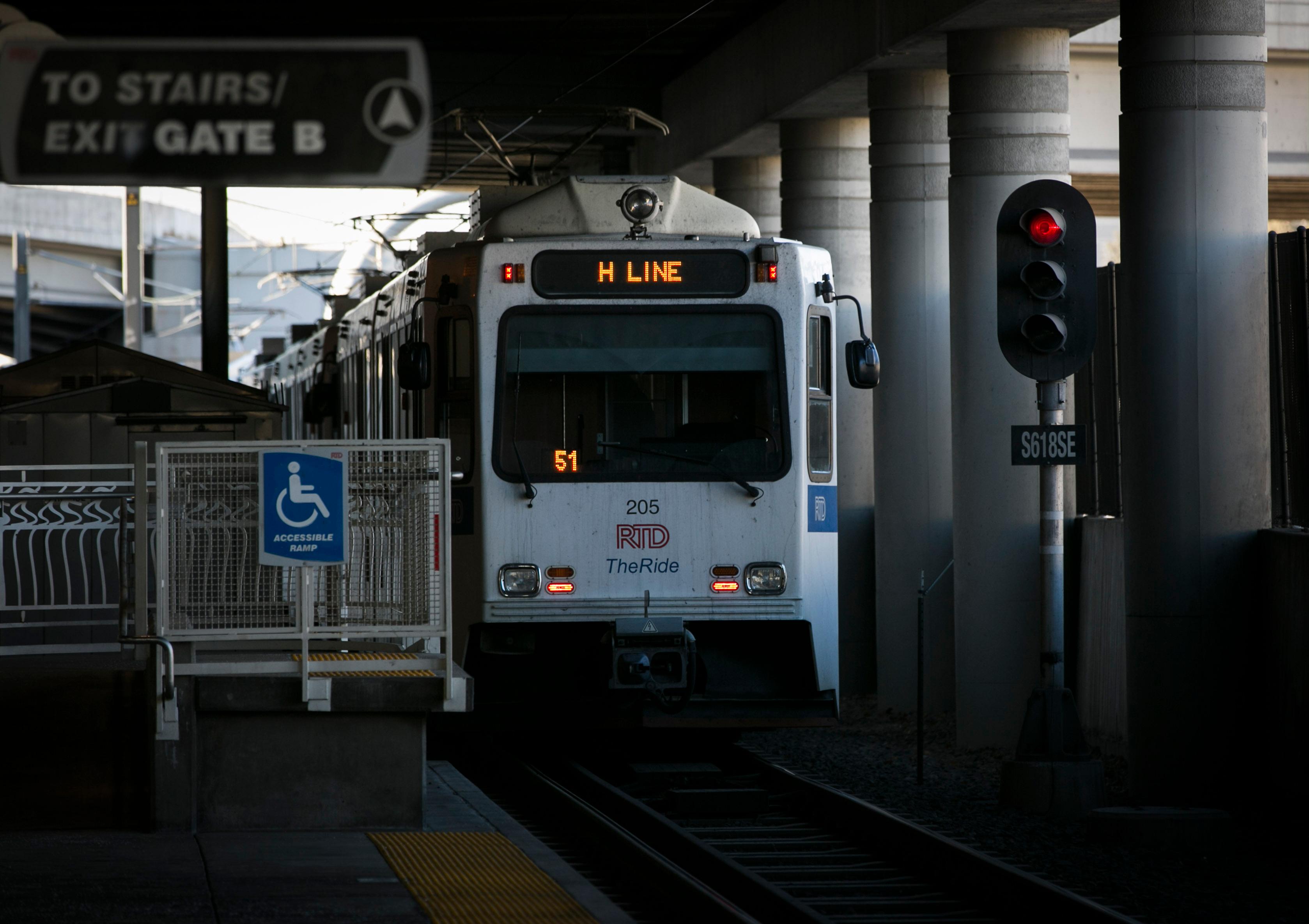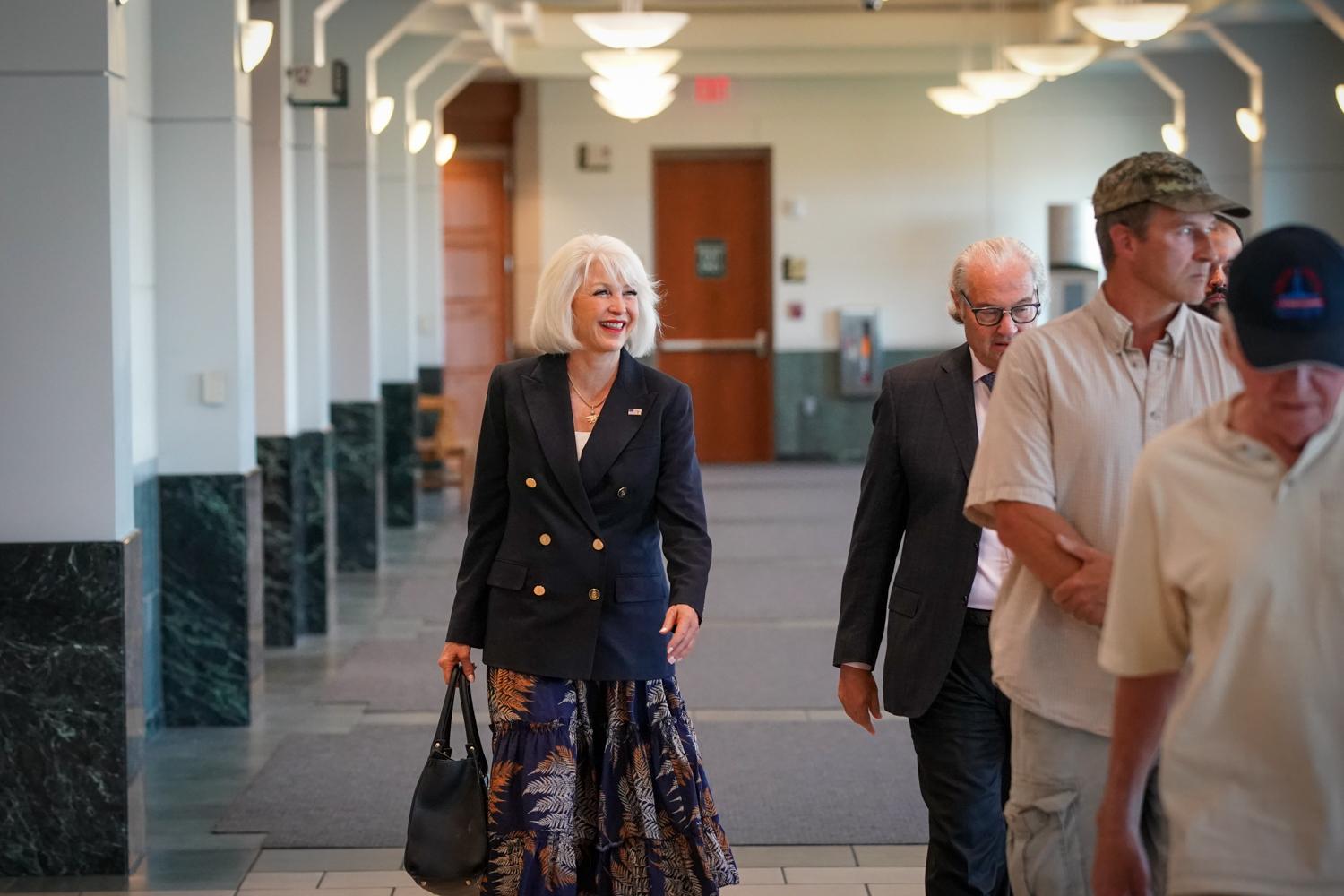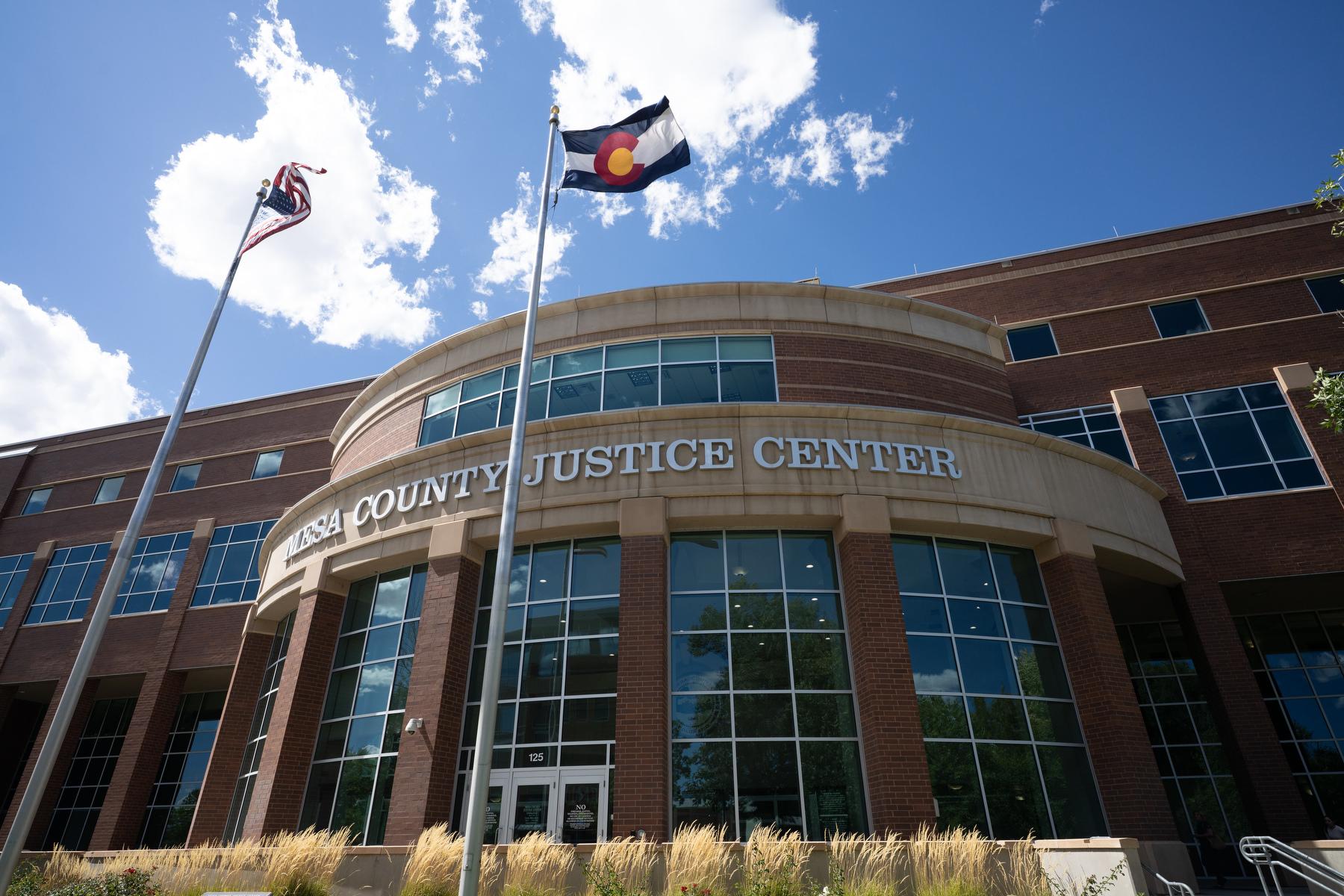
The number of red signal violations by Regional Transportation District light rail operators has risen dramatically in recent years, a review of internal data shows.
Hundreds of red-yellow-green and “T” signals are scattered along the light rail lines that spread across the Denver metro. (White “T” signals are used in congested areas to differentiate train signals from green-yellow-red car traffic signals.) They are meant to keep train cars clear of each other, and street traffic.
In the early 2010s, the number of violations per year hovered around 10. Since then, that figure has jumped significantly. There were 116 violations in 2017, according to RTD data obtained under the Colorado Open Records Act. The data does not cover RTD’s A or B lines, which use heavy commuter trains.
“Oh my,” said Aaron Boettcher when shown the data. He is chief steward for light rail operations at ATU Local 1001, the union that represents train operators and bus drivers and is also currently in contract negotiations with the agency.
At their worst, such violations can lead to dangerous collisions. In June 2017, a light rail vehicle collided with a Toyota Prius in downtown Denver. At the time, it was unclear who was at fault for the accident. (There were no fatalities, but the Prius was crushed.) But RTD’s data, and a state Public Utilities Commission safety report, show that the light rail operator violated a stop signal.
"We do see these things happen occasionally, but they are much more the exception than the rule,” said Mike Meader, RTD’s chief safety officer.
Far more common, said Meader, are more mundane mistakes where an operator stops a little too late or anticipates a go signal a little too early. Regulators and the union agree with Meader, and point to a variety of measures in place meant to keep everyone safe. That includes an automatic train stopping system and built-in buffer space between trains.
"We started looking more at the severity, not just the number,” said Pam Fischhaber, the PUC rail/transit safety chief who has performed safety audits of RTD’s light rail system for years. She also pointed out that the addition of the W and R lines in the last four years means there are more opportunities for mistakes.
RTD spokesman Scott Reed said the agency takes every violation seriously. But he added that the number of violations compared to signals passed suggests that operators are doing pretty well.
"It comes out to about 0.04 percent of all the signal interactions,” Reed said. “That is still too many. We want to get to zero.”
The Colorado Public Utilities Commission’s most recent audit of red signal violations, from March 2016, noted an uptick. But it also cited an RTD analysis that did not “conclusively determine if there was a systemic issue.” Rather, the rise was attributed to operator error.
Operators Don’t Stick Around
RTD’s data shows most violations were committed by operators with fewer than five years on the job.
Many of RTD’s light rail operators are new hires. Back in the 2000s, said Boettcher, the union steward, most operators were internal hires from RTD’s bus division. But now, he said, the agency has struggled to hire and retain operators — even as the light rail system has continued to grow.
"The working conditions that we're under are very bad,” Boettcher said. He’s been at RTD since the 1990s and a light rail operator for more than a decade.
By his estimation, the transportation district is about 70 operators short of what it needs to run its system. Terry Emmons, RTD’s assistant general manager for rail operations, put that figure at 50 operators.
Light rail operator jobs start at nearly $18 an hour, and don’t require a post-secondary degree. But split shifts are increasingly common, and many workers have to report for duty well before dawn or end work past midnight. They can only use the bathroom a few times a shift, Boettcher said, which is problematic when many rely on coffee to get going early in the morning.
"I've known operators, who were trying to finish out their time to get to their pension, who wear adult diapers,” he said. “Why do we have operators out there soiling themselves in the 21st century?”
Many new operators quickly decide to take a lower-paying job elsewhere that’s easier on the body, Boettcher said. RTD, along with many other government agencies in the booming metro area, has had trouble recruiting workers. "As we expand our system, we need more operators,” Reed said. “We need more mechanics. And it is an incredibly competitive environment, just in the terms of the entire employment market."
The end result is operators with little experience working longer hours. And RTD’s data shows that most violations happen later in an operator’s work week.
Spokesman Scott Reed said the agency is now giving bonuses to operators who work overtime or split shifts. New operators are given a $2,000 signing bonus as well.
He also pointed to seniority rules in the union’s contract that mean that the least-experienced drivers are often stuck with the toughest shifts. "A lot of the working conditions are generated by the seniority process that is part of the collective bargaining agreement," Reed said.
Sticking points thus far in contract negotiations include seniority rules, wages and forced overtime. The current contract expires March 1, 2018.
An Increasingly Congested System
There’s another wrinkle, as well. As the light rail system has expanded, more trains have been squeezed into a handful of tight corridors like I-25 and Broadway to 10th and Osage where five lines converge.
"We have a lot of trains in a tiny box trying to move as fast as we can," Boettcher said.
During rush hour, Boettcher pointed out, trains come every 90 seconds. “People get antsy and get jumpy,” he said. “Mistakes happen.”
Experienced operators who violate three signals in a 12-month period can be terminated. That can weigh heavily on operators, Boettcher said.
“You've got two reds on your ticket and you're about to get fired,” he said. “You spend all day thinking that the next signal is going to get me. You get on edge. Why stick around for that?"
Even so, RTD recently softened its standards on red signal violations. Previously, two violations in a year was grounds for termination. It has also revamped its training program, which regulators at the PUC call a positive move.
"I don't believe there's a problem they are trying to hide,” Fischhaber said of RTD. “I think they've taken the training piece seriously."
New operators now have to physically point to each signal and say aloud whether it is green, yellow or red. And audible chirps now alert operators of red signals. Boettcher said they are annoying enough to be “almost a punishment,” but RTD said they help drivers focus.
The agency said these measures have already resulted in fewer violations in the last few months. But Boettcher argues that unless more operators are added — and retained — the problem will soon get worse.
Do you have more questions about transportation in Colorado? Email the reporter at [email protected].
Editor's Note: An earlier version of this story incorrectly stated that all light rail operators had to point at each signal and vocally describe it. That's only true for new student operators.








